How To Use A Small Animal Trap
Trapping 101
In this section, Havahart® provides general live animal trapping information. You'll observe an overview of how to trap animals, different trap types, and answers to your virtually common animal trapping questions!
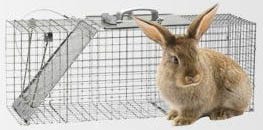
How to Trap a Wild Animate being
This page is a nifty place to get familiar with how to employ alive animal traps to solve your nuisance creature trouble. For animal-specific trapping advice, select your creature on the Animal How-To Page »
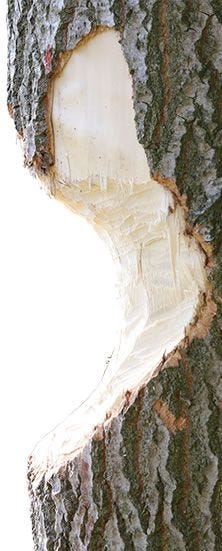
ane Empathise Your Trouble
The first step is to identify the size and type of animal that is wreaking havoc on your property. You do this by taking a look at the impairment that is occurring - for case:
- If the tops of plants are being eaten, information technology is most probable a deer-sized animal, which can reach these areas. Deer harm can be plant every bit high as 6 feet up the constitute.
- Rodents are known to dig tunnels and gnaw on barks and roots.
- Groundhogs are famous for chewing anything and everything to acuminate their teeth. Burrow holes and dirt mounds are major clues to the presence of a groundhog.
- Trashcans tipped over betoken to an ambitious mid-sized animal such equally a raccoon.
- Rabbits volition eat only about anything. You can identify rabbit damage by 45-caste angled cuts on the end of stems and leaves.
TIP: Virtually animals are nocturnal. Check at sunset to see if you can spot the animal in areas where you are noticing damage.
2 Select a Live Trap
A alive brute trap should exist large plenty so that the majority of the animal'southward body can fit inside before reaching the trigger plate (not including the tail). Additionally, the trap should be small enough every bit to not allow for too much actress space for the animal to move effectually (see general guidelines below).
Live animal traps vary not only in size, but also in number of doors, ease of apply, and other helpful features. To learn more nigh the dissimilar traps available, read Trap Types »

3 Identify Your Trap
Place your trap along your animate being's travel path, exterior its den or burrow, or in the area where you lot detect animal activity. For best results, position your trap:
- in a fairly quiet expanse; far from people and pets
- close to a water source (unless indoors)
- on a flat, level surface
- forth a wall or fence line (if available, about animals will travel forth this type of guide)
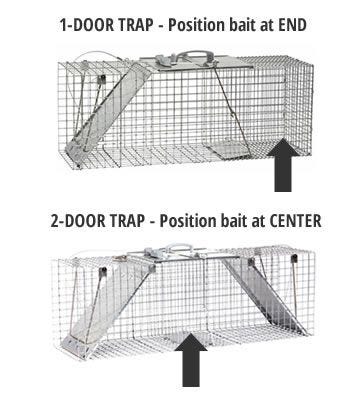
4 Select and Position Allurement
Utilise nutrient to strategically lure your beast inside the trap.
- Select: All animals have different tastes, so pick a food that your fauna will like. For assistance choosing a bait, select your target animal from the Havahart® Animal How-To page.
- Position: While selecting a allurement is important, positioning your bait is key to success. Place your bait in a way that will forcefulness the fauna to stride on the trigger plate (see diagrams to the right).
To acquire more than well-nigh baiting a live trap, read How to Bait »
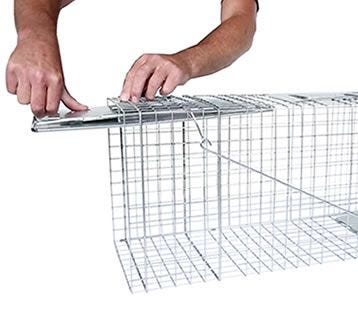
5 Set Your Trap
Carefully set the doors to the open position. Each trap sets differently, then make sure you lot follow your trap'south unique instructions. (For help setting a Havahart® trap, visit the trap's product page or the Havahart® YouTube Channel to run across the pace-past-footstep video instructions.)
This pace may take some patience. Depending on your animal's activity and personality, it could take anywhere from a couple of hours to a few days to make a grab.

half dozen Bank check Your Trap Frequently
The longer an animal is trapped, the longer it will grow anxious, frightened, and hungry. Information technology is very of import to check on your trap periodically to ensure your beast does not remain inside the muzzle for an elongated period of time.
This footstep may take some patience. Depending on your animal's action and personality, it could take anywhere from a couple of hours to a few days to brand a catch.
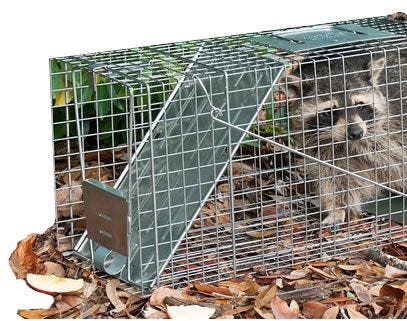
7 You've Defenseless an Animal!
- Be gentle and speak softly when approaching and handling the trap.
- Vesture gloves and concord the trap abroad from your torso to protect yourself from contact with the beast.
- Encompass the trap with a blanket or fabric to keep the animate being calm.
- If local laws allow, release the creature at least 5 miles away.
- After letting the brute go, disinfect the cage with a bleach solution to remove your scent and prevent the spreading of germs.
TIP: To disinfect your trap, create a solution of ane part bleach to ix parts of water. Apply the solution, and wait 20 minutes before wiping down the trap.
Expert Tips
- For more beast-specific instructions and trapping tips, select your beast from the Havahart® Creature How-To Folio.
- Many wild animals tin behave diseases, and so be sure to have the proper precautions when handling a trap.
- Understanding your animate being's habits and preferences will aid yous catch it sooner. For instance, if your animal is nocturnal, you should ready your trap at dusk and close it in the morning to avoid catching unwanted critters. Havahart® offers all of the information you demand to learn virtually your target beast so that you lot can more effectively take command.
- Gloves are of import throughout all stages of animate being trapping. Not simply do they protect you from contact with an creature, only also they forestall y'all from transferring your scent onto the cage - which could otherwise make animals suspicious and wary of entering.
- Anchor your trap by placing a brick or weight on top of information technology so an animal cannot knock it over to steal the bait. Alternatively, if you are using a very pocket-size trap, yous may be able to tie information technology down or stake it into the basis. Anchoring your trap volition also forestall the trap from rattling and startling the animal when information technology enters, which is of import for exceptionally skittish creatures.
- A shiny, new trap can produce a glare that might be off-putting to wary animals. Reduce this glare by camouflaging your trap with mud, sticks, leaves and anything else that naturally occurs in the surface area in which you set up your trap. When camouflaging your trap, do not to let whatsoever materials make it the mode of the trigger and shut machinery.
- When seeking a location for your trap, pay attention to the availability of nearby cover; some animals will not stray far from this kind of protection, while others adopt to be out in the open.
- Allow your animal to become comfortable with the trap before you fix information technology upwards for a catch. Tie or prop open your trap door(s) and so that it cannot trigger airtight, and place some bait inside. Perhaps create a trail of allurement that leads to the trap likewise. When you notice the bait inside the trap has been eaten, remove the ties or prop so that the next fourth dimension your animal enters, the doors will close.
- Once y'all successfully trap an animal, proceed it out by reducing attractants, repelling and excluding - all part of an effective integrated command plan.
Source: https://www.havahart.com/expert-how-to-tips-to-trap-animals
Posted by: bustosgrosen.blogspot.com

0 Response to "How To Use A Small Animal Trap"
Post a Comment